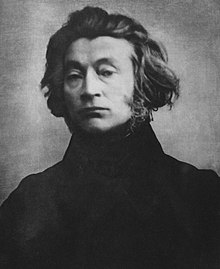We begin the week here on My Poetic Side with a look at the Google Doodle dedicated to the epic work of the “Slavic Bard”.
The Google Doodle Dedicated to a Poem

On Friday the Doodle team at Google dedicated their doodle to the epic Polish masterpiece Pan Tadeusz. The occasion was the 185th anniversary of the publication of the poem which was penned by Adam Mickiewicz, the Romantic Polish poet.
In 1834 the poem Pan Tadeusz, which is widely acknowledged to be one of the greatest and last epic poems ever published in the literature of Europe was published. Pan Tadeusz is the short title of the poem it is actually called

The poem was penned in Paris and is a saga of 12 parts that perfectly encapsulates the spirit that was prevalent in Poland at the time; much of the country was divided between Austria, Russia and Prussia.
The setting of the poem is a Lithuanian village during the time period from 1811 to 1812. The story is that of a feud that takes place between two very prominent families, the son of one family, Tadeusz is in love with Zosia the daughter of the other family.
The two families are brought together following a revolt that takes place versus the nearby Russian garrison; they both had a desire to restore Poland to the country it had once been.
Over the years Pan Tadeusz has been translated into a significant number of foreign langages, it has also been the subject of numerous Tv adaptations and films the most recent of which was made in 1999.
Mickiewicz is well known for having written with great emotion, and the depth of his love for everything Polish. Some of the most popular lines of his poetry describe the country and her landscape, his descriptions of food are also very prominent. He is considered to be the most famous Polish poet and is often referred to as the “Slavic Bard.
As well as being a poet Mickiewicz was also an activist of the political type who fought for reform during the Nineteenth Century. He was a member of the Philomats’ Society during his time at University. The secret police of the Czar later arrested him under the charge of

Following this period in his life the work that he produced showed a much stronger Polish identity. This included Konrad Wallenrod, which he wrote in 1828. This was a lengthy narrative poem regarding a commander who had been brought up as pagan in Lithuania and eventually converted and became a Christian.
The Google Doodle depicts the 12 parts of the poem, the simplistic image shows the castle, the farm the consultation and a number of other pictures that depict each of the other scenes.


You must register to comment. Log in or Register.